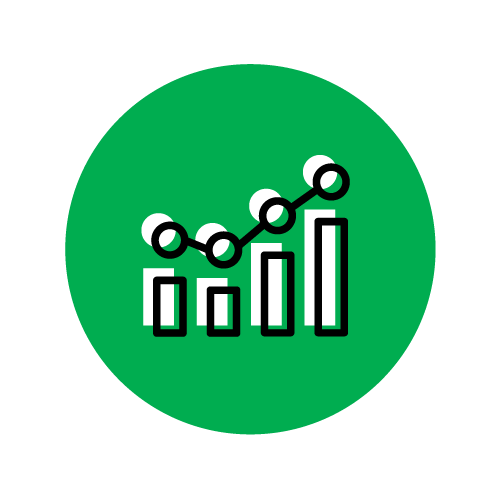The number of smartphone users worldwide is steadily increasing, expected to reach 3.8 billion by 2021. Many mobile marketing trends of the past few years remain relevant, gradually becoming best practices. Today we’ll discuss 5 trends that will help brands become more effective in the upcoming year.
Chatbots

Designed to interact with customers by simulating human interaction through a combination of pre-programmed scripts and artificial intelligence (AI), the chatbots are on the rise.
They can help users make and cancel appointments, conduct surveys, place orders, answer questions — and the list of tasks entrusted to them continues to grow. Chatbots also allow brands to learn more about their customers as they interact with them, creating additional opportunities and driving engagement.
The ability to provide 24/7 service and support improves customer satisfaction while reducing the need for live staff, ultimately saving money and time. As they communicate with users, chatbots can “learn” to answer frequently asked questions based on data collected from previous interactions. This ever-growing knowledge base allows you to provide customers with the information they need and avoid the cost of pre-programming multiple interaction scenarios.
Social and mobile commerce

The number of purchases made on mobile devices increased dramatically in 2020. In the United States alone, the number of food delivery app downloads grew by 200% during the first months following the outbreak. This trend will continue into the next year — at least until the Covid-19 vaccine becomes widely available.
As customers spend more and more time on their mobile devices and often choose social networks as a distraction, social commerce will become a logical development of the idea of mobile commerce. Social networks such as Instagram, Facebook, and Twitter already provide all the tools you need to promote and sell products and services.
Geotargeting

Experts predict that geotargeted mobile ads spending will reach $32.4 bn by 2021. In our opinion, investing in geotargeting in 2021 will be beneficial for two reasons.
Firstly, considering the population’s limited mobility, consumers are very much interested in buying their necessary goods closer to home. Simply providing regular updates on the stock available in the closest store will significantly increase your attractiveness.
Secondly, as the coronavirus vaccine spreads, we can expect at least a gradual resurgence in people’s mobility, and a tangible increase at the most, when all unwilling hermits will finally get the opportunity to spend a vacation outside their own home. In this scenario, geofencing will be of great help. It allows you to deliver a predefined marketing message, banner, or other content to the user as soon as the latter enters a specific area. It can be a filling station, a local attraction, or even your competitor’s territory on the tourists’ route. Sending special offers to potential customers in the right place and time for the maximum impact will increase your sales, growing customer loyalty and brand awareness.
Voice search

Since the introduction of Siri in 2011, voice search has become virtually ubiquitous. However, COVID-19 has unexpectedly forced users to use this search method even more actively, in part because asking questions out loud is more comfortable at home, and in part simply because it is more hygienic. The popularity of Siri and its “colleagues” — Alexa, Google and Cortana continues to grow: 27% of the global audience use voice search on mobile devices today.
When adapting content for voice search, keep one thing in mind: the client talks to the voice assistant. Your tone and choice of keywords should be as close to natural language as possible.
AI-based analytics

By 2021, it is difficult to imagine a successful brand that does not use analytics to design and adapt its campaigns. But is there a way to take your analytics to the next level?
The increasing number of touchpoints between brands and customers, and the growing role of omnichannel, makes analysing consumers’ data and journeys increasingly difficult. In our opinion, the solution lies in the use of artificial intelligence and process automation.
By processing massive amounts of data, AI-powered tools can generate reports and predictions so that marketers can adjust their campaigns on the fly. Plus, further automation allows you to create special offers for specific customers based on their interests and history of searches and purchases.
In conclusion
Over the past year, consumers’ daily lives have changed dramatically, forcing brands to adapt their approach to communicating with their audience. As life gets back to normal, we will have to learn to live in a new reality; and brands will have to learn to build businesses which take into account the lessons learned.

